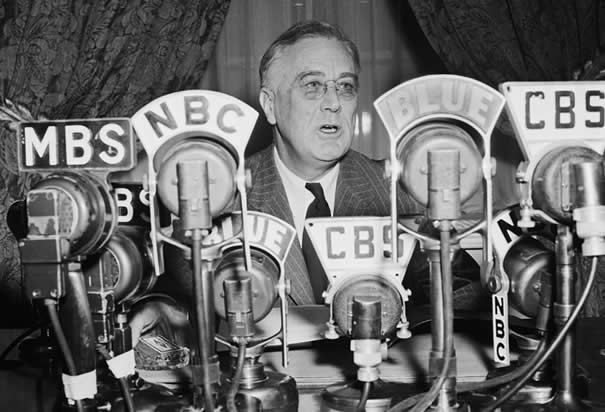- City:
- Baltimore, MD
- Site Type:
- Mass Transportation, Infrastructure and Utilities
- New Deal Agencies:
- Public Works Funding, Public Works Administration (PWA)
- Started:
- 1934
- Completed:
- 1935
- Quality of Information:
- Very Good
- Marked:
- No
- Site Survival:
- No Longer Extant
Description
In 1934, Daniel Willard, president of the Baltimore & Ohio (B&O) railroad, “negotiated a $900,000 Public Works Administration loan which would be used to make B & O’s New York-Washington line an industry-wide proving ground for various types of lightweight train construction and high-speed steam and diesel power” (Harwood, 1990).
Among the equipment constructed with this loan was the Royal Blue, a streamline train set consisting of eight cars made out of aluminum and lightweight steel. The Royal Blue was a reincarnation of a popular B&O train service from the turn of the century plus “a quarter of a century of railroading progress… The streamlined coaches, made of non-corrosive steel, weigh only a little more than half as much as ordinary coaches. Comfort has been increased by improvements in mechanical details and by the installation of reclining seats in coaches and parlor cars. And, of course, air-conditioning was unheard of in the days of the original ‘Royal Limited’” (Baltimore Sun, 6-23-1935).
The Royal Blue was part of the new and exciting era of streamline trains that captured the public’s imagination during the 1930s. For the B&O’s leadership, it served as a test whether the company’s future locomotive power would be steam or Diesel. New engines were constructed, or redesigned, for the specific purpose of pulling the new lightweight trains (see, for example, our project pages for the Lady Baltimore and Locomotive No. 50). Ultimately, Diesel won out (but not without hiccups).
Daniel Willard was unhappy with the Royal Blue and its engines, and there were complaints of excessive vibration and lack of power. In 1937, the train and two engines, including Diesel No. 50, were transferred to the B&O’s subsidiary service, the Alton Railroad (Chicago-to-St. Louis) and re-named the Abraham Lincoln. Interestingly, “Whatever the lightweight train’s problems were on the New York run, they apparently vanished in the Midwest; the Abraham Lincoln [former Royal Blue] lived a long life, operating into the late 1960s” (Harwood, 1990). And after a few modifications, Diesel No. 50 also performed well and ran until 1959. Today, No. 50 resides at the National Museum of Transportation in St. Louis. (The two prominent lightweight steam engines for the B&O – the Lady Baltimore and Lord Baltimore – were scrapped in 1950).
The B&O was one of over 30 railroads assisted by PWA funding. This New Deal helping-hand reinvigorated an industry pummeled by the Great Depression, and facilitated numerous design and engineering advancements.
(Note: After the Royal Blue was moved west in 1937 and re-named, the B&O created more “Royal Blue” trains. These subsequent trains were not PWA-funded.)
Source notes
Herbert H. Harwood, Jr., Royal Blue Line, Sykesville, MD: Greenberg Publishing Company, Inc., 1990.
Lawrence W. Sagle, A Picture History of B&O Motive Power, New York: Simmons-Boardman Publishing Corporation, 1952.
“New B.&O. Flyers Off Tomorrow,” The Baltimore Sun, June 23, 1935, p. 8 – section 2.
“More Streamline Trains As Result Of PWA Funds,” The Bangor Daily News (Bangor, Maine), October 29, 1934, p. 5
Site originally submitted by Brent McKee on August 11, 2022.
Contribute to this Site
We welcome contributions of additional information on any New Deal site.
Submit More Information or Photographs for this New Deal Site




Join the Conversation